One of the signs describing the history of the Paris Metro.
The sign found at the Saint-Ambroise station describes the Saint Saint-Ambroise, and the animals found in the area and at the station.
The text refers to the images that appear on the sign, and that appear here in enlargement:
(1) Ambrose -
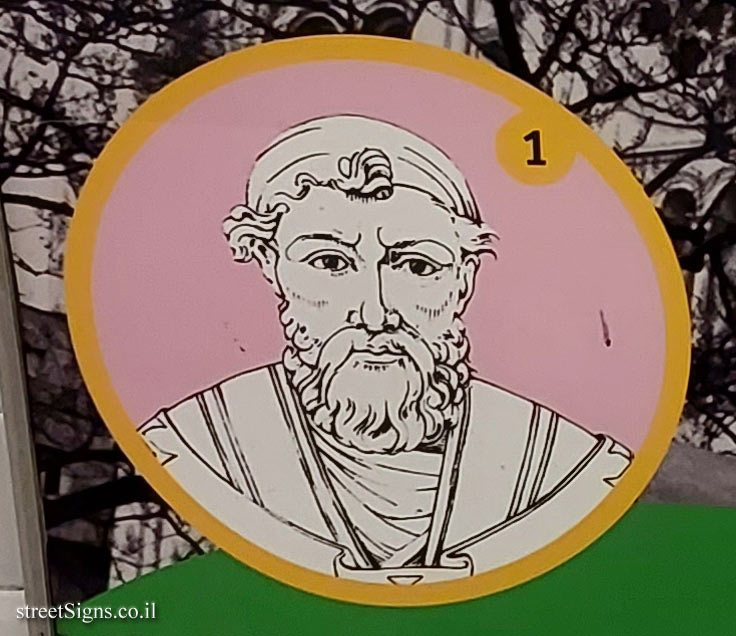 Click for a larger image
Click for a larger image (2) Cricket -
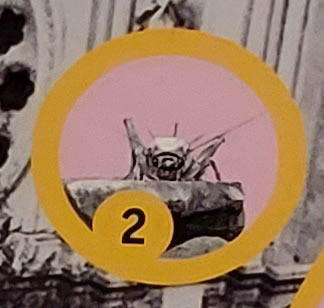 Click for a larger image
Click for a larger image (3) Brown rat -
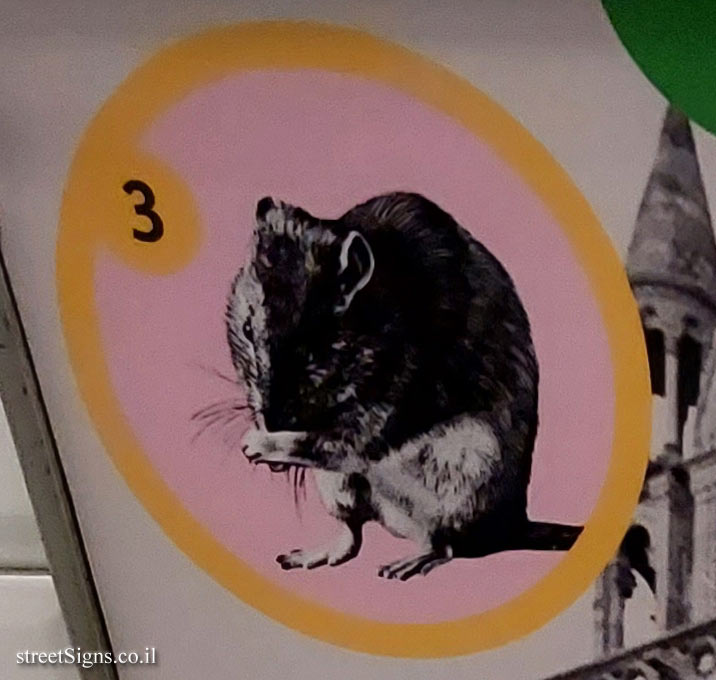 Click for a larger image
Click for a larger image (4) The snake found in the first class -
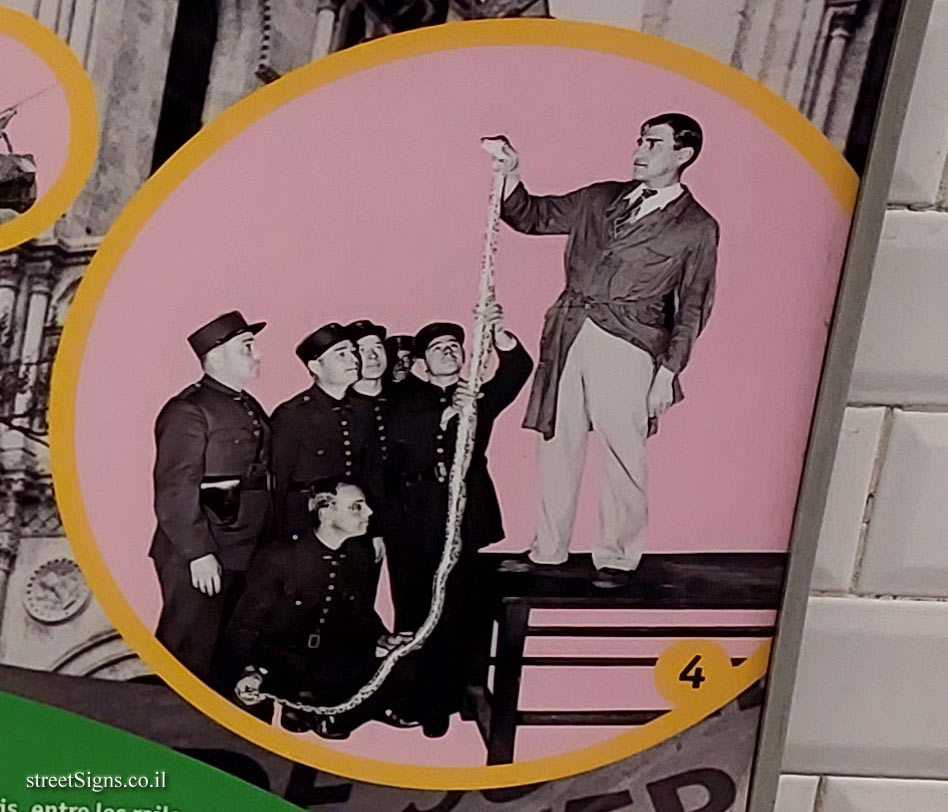 Click for a larger image
Click for a larger image In the background of the sign appears the Saint-Ambroise church mentioned in the text
RATP - Régie Autonome des Transports Parisiens - Autonomous Parisian Transportation Administration
Translation of the text on the sign:
metro culture
metro history
Saint-Ambroise the animal metro Saint-Ambroise is the land of animals. Do you doubt it? The demonstration is nevertheless luminous. Ambrose (1) is indeed a saint (so far so good). Born around 340 in Trier, he became governor, then bishop in Milan where he died in 397, after having baptized Saint Augustine. No connection with animals? Think again. Because Saint Ambrose, whose feast day is celebrated on December 7, is also... the patron saint of beekeepers. And for good reason: its name evokes ambrosia, this drink of the gods of Olympus which brought immortality and which is also called nectar, like the honeyed juice that bees gather!
The Saint-Ambroise church, built in the 19th century on the site of the former Convent of the Annonciades of Popincourt, is, however, nothing like a hive. This Romanesque-ogival style building built by Ballu, one of the architects of the Town Hall, is flanked by two 68 m high towers where kestrels sometimes nest. The church bells were blessed in 1869 in the presence of Emperor Napoleon III, who wanted to achieve the union of the saber and the brush. But if the gods of Olympus mingle here with the God of the Christians, the bees lack flowers to gather nectar there.
On the platforms, between the rails, in the corridors and in the tunnels, little-known fauna lives: mosquitoes and crickets (2), great lovers of heat, take up their winter quarters here, before undoubtedly following, tourists on the French Riviera. Discreet, these underground stowaways are called brown rats (3), gray mice, house sparrows, city rock pigeons, oriental cockroaches and cellar blaps... One day, RATP agents even found a boa there which slept peacefully in a first class carriage at the Place de Clichy station! (4)
Saints in the metro
/ Basilica of Saint-Denis
Porte de Saint-Ouen / Saint-Michel
Saint-Georges / Saint-Paul
Saint-Lazare / Pré-Saint-Gervais
Saint-Augustin / Saint-Philippe-du-Raule
Saint Philippe du Roule / Saint-Fargeau
Saint-François-Xavier / Rue Saint-Maur
Saint-Placide / Saint-Ambroise
Porte de Saint-Cloud / Saint-Mandé Turret
Saint-Sulpice / Saint-Sébastien Froissart
Saint-Germain-des-Prés / Saint-Marcel
/ Saint Jacques

 Click for a larger image
Click for a larger image  Click for a larger image
Click for a larger image  Click for a larger image
Click for a larger image  Click for a larger image
Click for a larger image 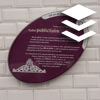 Click for all signs belonging to Paris - 100 Years of Metro History
Click for all signs belonging to Paris - 100 Years of Metro History
 846 Meter |
846 Meter |  1.24 Km |
1.24 Km |  1.27 Km |
1.27 Km |  2.11 Km |
2.11 Km |  2.56 Km
2.56 Km